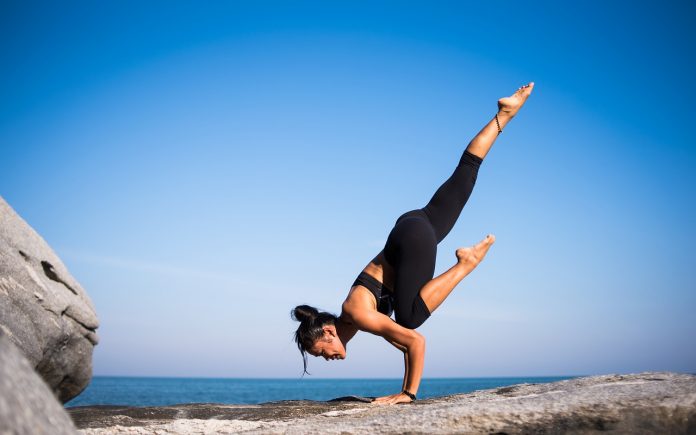A morning yoga routine can help you improve brain function, lower stress levels, and improve flexibility and posture, strengthen your muscles, and help with weight loss. In this article, I will be sharing a 10-minute yoga routine for the morning, which is perfect for beginners.
This yoga sequence will stretch your entire body and centre your mind. No special workout gear or studio space necessary as these beginner-friendly yoga poses can be done on a mat or in the comfort of your living room. You will walk away feeling energized and ready to create a purposeful and positive day.
1. Tadasana (Mountain Pose)

Mountain Pose is a great way to start your morning yoga routine as it is the foundational position for all the standing poses. It is the best morning yoga for beginners. Ground your feet and press evenly through all four corners of each foot while breathing steadily and rhythmically. Stretch out your arms towards the floor and draw your abdominals in and up. Mountain Pose improves your posture, strengths your legs, relieves sciatica and reduces flat feet.
Stay in the pose for 30 seconds to 1 minute to get focused and ready to move deeper. Make sure you don’t put too much pressure on your knees given that it may cause pain in the knees. People suffering from migraine, insomnia, joint pain or low blood pressure should avoid practising this pose.
2. Urdhva Hastasana (Upward Salute Pose)

From Mountain Pose, lift your arms overhead toward the ceiling and press your palms firmly together. Keep the tops of your shoulders released away from your ears and activate your triceps through fingertips. Keep the abdominals engaged and the legs firm, so that they draw the kneecaps up. Upward Salute Pose stretches your belly and improves digestion. It also enables a full body stretch and helps in relieving mild anxiety.
Hold the pose for up to one minute and then slowly lower your arms back down to your side. You must avoid fully raising your arms overhead if you have neck or shoulder injuries. It is recommended to work within your range of limits and abilities.
3. Virabhadrasana I (Warrior I Pose)
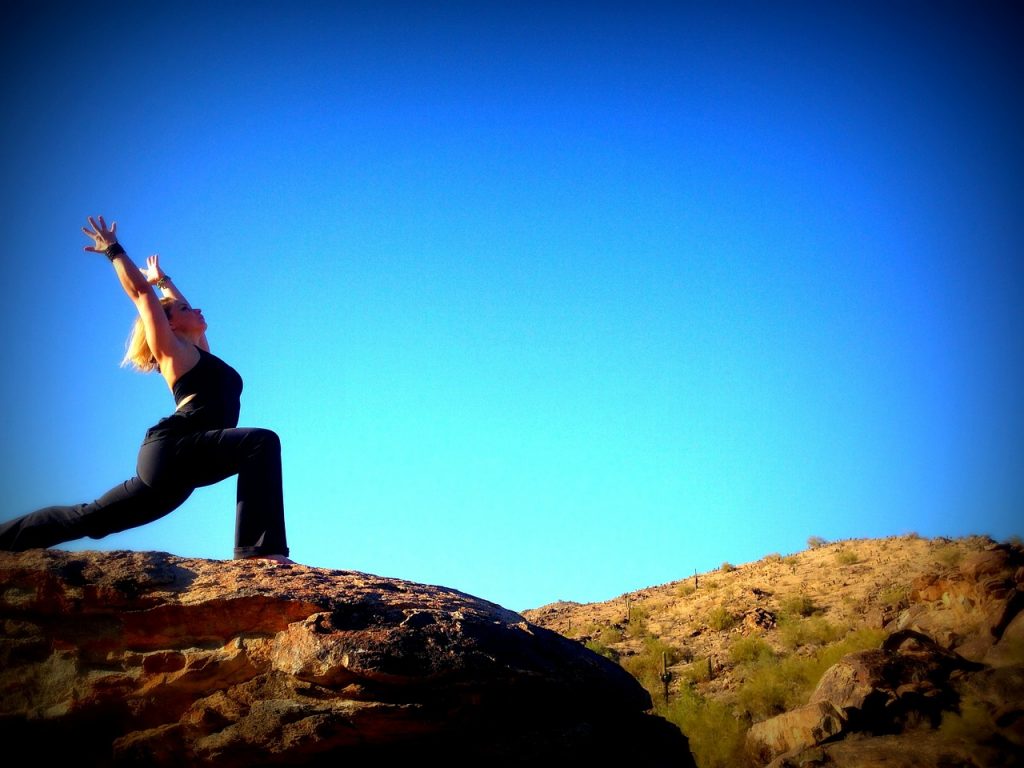
Warrior poses are always awesome to do in the morning. The poses give us confidence and help us connect to our own inner strength. In particular, by doing Warrior I Pose, you will get a good stretch of both front and rear thigh, hips, and chest, as well as a back extension of the erector spinal muscle. The pose strengthens your shoulders and arms, and the muscles of the back.
From Upward Salute Pose, step your left foot back for one of your own leg’s length apart. Press the outer left foot into the mat as you lunge your right knee forward, where the left foot should be pointing at a seventy-five-degree angle. Keep your shoulders dropped away from your ears and make sure the knee stays above the ankle. If you are experiencing neck pain, make sure to keep your head in a neutral position.
Hold this pose for up to a minute and once you are done, return to Mountain Pose. If you have heart problems, severe neck or shoulder pain, knee pain, high blood pressure or chronic illness, avoid practising this pose.
4. Virabhadrasana II (Warrior II Pose)

From Warrior, I Pose on the right side, open the arms, hips, and waist to the side while you gaze forward over your right hand. Your back toes can open up a bit more than seventy-five degrees, however, keep the toes a little forward of the heel still. Make sure that the front knee does not roll in. Adopt this morning yoga for beginners.
Draw your abs in and keep the torso equally long between the legs. Warrior II Pose is a powerful stretch for the legs, groins, and chest. At the same time, it also increases stamina, helps to relieve backaches, and stimulates healthy digestion.
Stay and breathe for 30 seconds to 1 minute. If you have any neck problem, don’t turn your head to look over the front hand. Avoid this pose if you have diarrhoea, high blood pressure or any recent hip, knee, or shoulder injury.
5. Trikonasana (Triangle Pose)
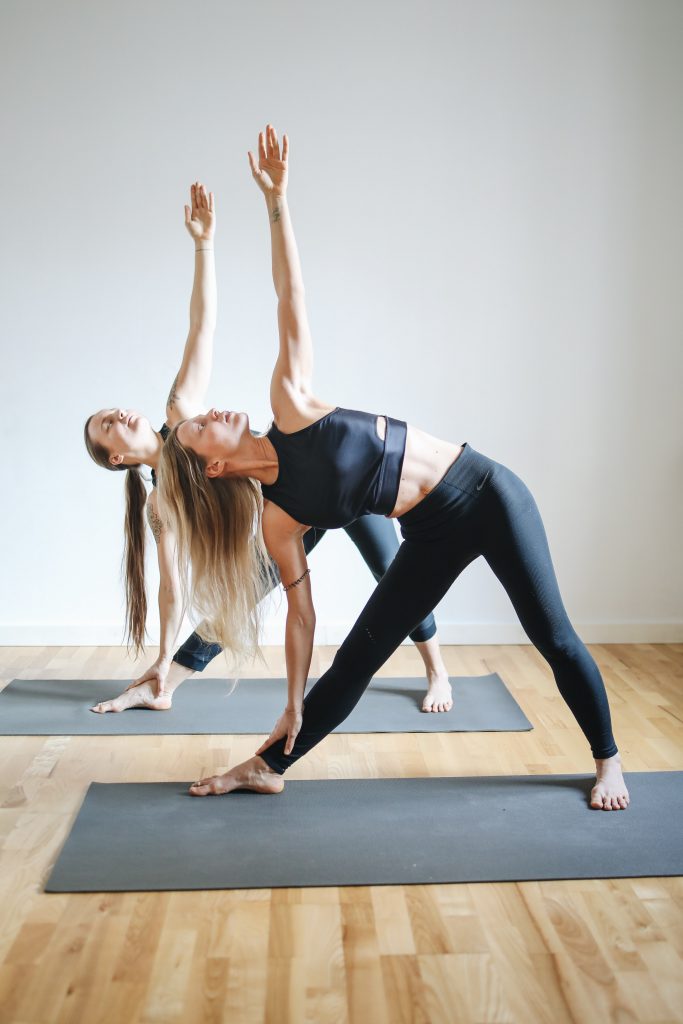
From Warrior II pose, straighten your front leg and hinge towards the front of your mat placing the right hand on the ground, block, or shin. Reach your left hand towards the sky and imagine yourself between two narrow walls. Triangle Pose strengthens the muscles in the thighs, hips, and back, and relieves lower back pain, stress and sluggish digestion. This pose also stimulates the abdominal organs, improving metabolism. It is also known to be a wonderful therapeutic for anxiety, flat feet, infertility, neck pain, osteoporosis, and sciatica.
Hold this pose for up to a minute, then come back up to standing. When doing this pose, do not overstretch the body as it may cause unnecessary pain or injury. Avoid this pose if you have pain in the neck, back or shoulders. People who are suffering from diarrhoea, high blood pressure, spinal disorders, heart problem or cervical spondylitis must not perform this pose.
6. Utthita Parsvakonasana (Extended Side Angle Pose)
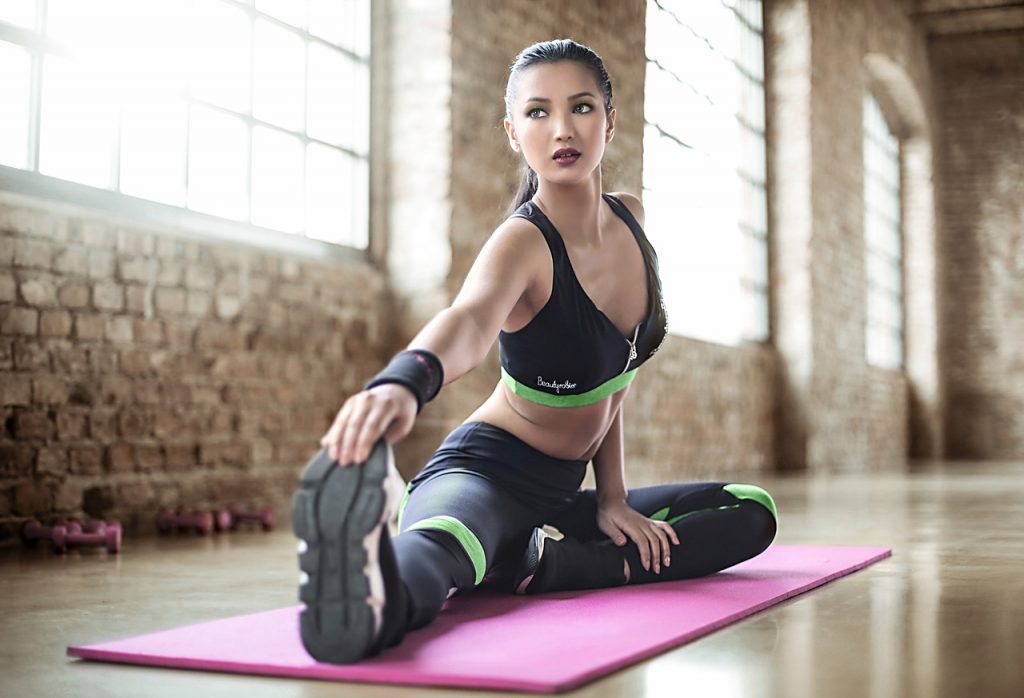
Begin in Warrior II pose with your right foot forward; re-bend the front knee and place the outer right forearm on the upper right thigh. Extend the top arm towards the ceiling and lengthen from the outer edge of the left foot all the way through the left fingers. If you have neck problems, look straight or look down instead of turning your head to look at the top arm. Extended Side Angle Pose tones the ankles, knees and thighs, and gives a good stretch to the back, while fully opening the chest. This is the best morning yoga for beginners.
Hold for three to five breaths. Then, return to Warrior II pose and repeat on the other side. Avoid practising this pose in case if you suffer from regular headaches, migraine, high or low blood pressure, insomnia, joint pain or injuries in the neck, back or shoulders.
7. Adho Mukha Svanasana (Downward Facing Dog Pose)
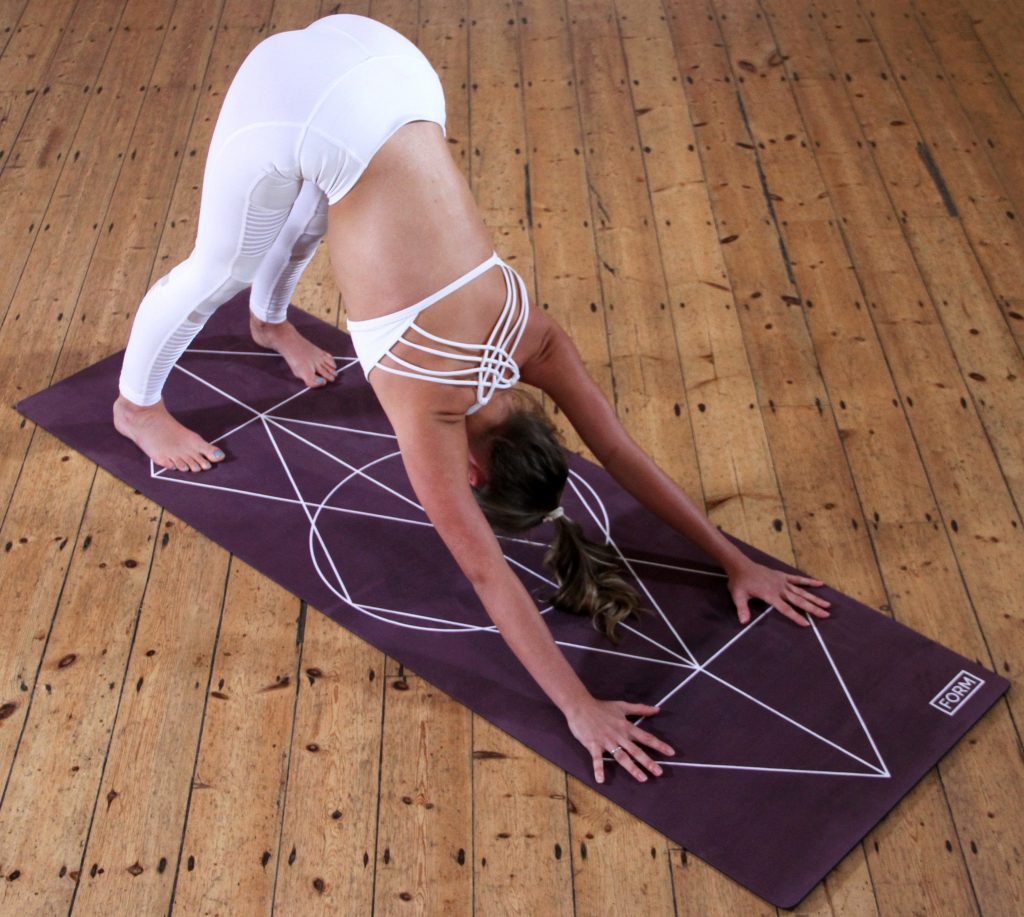
Come onto the floor on your hands and knees, place both hands on either side of the left foot from Extended Side Angle and step the left foot back in line the right as you get into Downward Facing Dog Pose. Press firmly into your hands, stretch out your upper arms, lengthen up through your torso and keep your abdominals engaged. Actively use your legs to bring your torso back in space. If you need to bend your knees, that is fine.
Downward Facing Dog Pose tones your core, improves your body posture, strengthens your bones and improves blood flow to the brains. The pose relieves headache, insomnia, back pain and fatigue and at the same time, it can be used as a therapeutic aid for high blood pressure, asthma, sciatica, flat feet and sinusitis.
Hold this pose anywhere from 1 to 2 minutes. While doing this pose, keep it evenly distributed on the hands and feet, and it is practised in the correct alignment. The pose needs to be practised gently by people suffering from high blood pressure. People suffering from carpal tunnel syndrome, week or injured shoulder or heel, any kind of inflammation of eyes and ears, or diarrhoea must avoid Downward Facing Dog Pose. Also, if you are pregnant, do not attempt this pose.
8. Makara Adho Mukha Svanasana (Dolphin Plank Pose)

Begin in Downward Facing Dog Pose and slowly shift the weight of the body to the front. Place your forearms on the floor and position your heels directly above the toes while keeping your legs straight. Make sure your body forms a straight line from head to toe and shoulders are aligned with your wrists.
Dolphin Plank Pose strengthens the core muscles in the chest, abdomen, arms, and legs. It helps prevent osteoporosis, calms the brain, and aids relieve stress and mild depression. The pose also stretches the shoulders, hamstrings, calves, and feet.
Keep your abdominals engaged and stay in this posture for thirty to sixty seconds to fire up your powerhouse for the day. Avoid this pose if you are suffering from shoulder, neck, or spinal injuries. Also avoid this pose if you have high blood pressure, or eye or ear infections. People who have undergone any recent surgery of the chest, abdomen, arms, hips, shoulders, or legs should not practice Dolphin Plank Pose.
9. Ardha Bhujangasana (Baby Cobra Pose)

Keep your legs together and lower down to your belly from Dolphin Plank Pose. Walk your hands slightly forward if need be and lift the chest off the floor. Pull your shoulder blades against the back, puffing the side ribs forward. Breathe into the front of your body and while inhaling always try to see the roof or towards the sky if you are doing it in the open ground.
Baby Cobra Pose strengthens the spinal support muscles, increases the mobility of the spine and can help relieve back pain. The pose stretches the chest, lungs, shoulders, and abdomen. It is also good for digestion and recommended as a therapeutic for asthma. Consider adopting this morning yoga for beginners.
Hold your position for at least 10-60 seconds, lower down and repeat two more times. The patients of sciatica, slip-disc, and ulcerative colitis should take extra care while performing Baby Cobra Pose. People who have peptic ulcers, hernia, intestinal tuberculosis, hypothyroidism, and abdominal injuries must avoid this pose. It is also not to be practised during pregnancy.
10. Balasana (Child’s Pose)
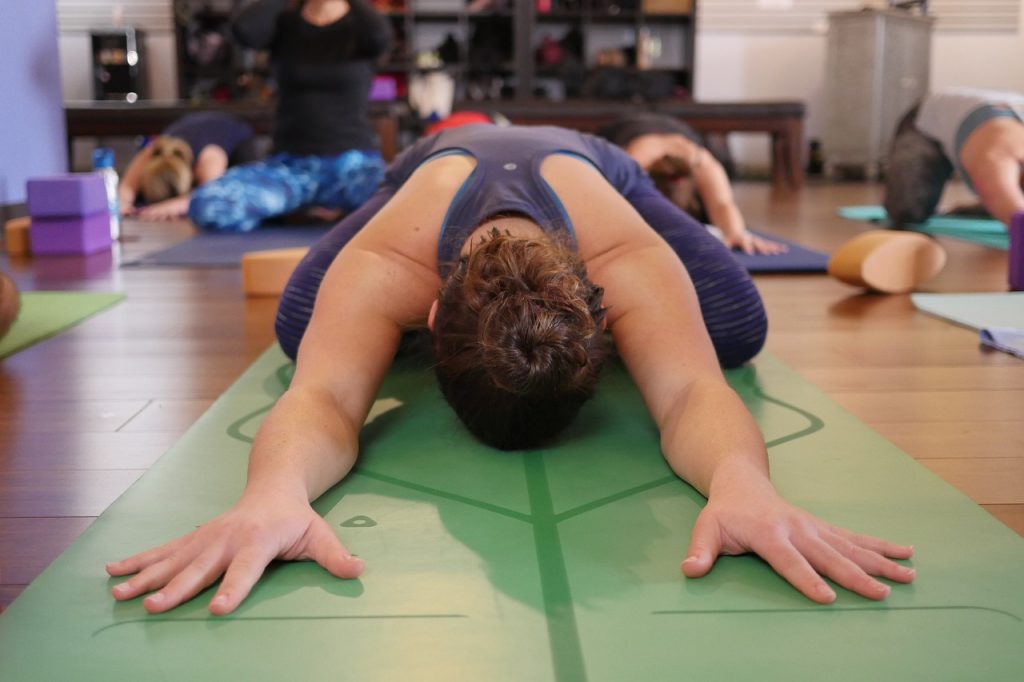
Child’s Pose is a resting pose and doing it after Baby Cobra Pose offers an opportunity to stabilise the spine by providing opposing actions. Come to the floor on your hands and knees, touch your big toes together and sit on your heel. Separate your knees about as wide as your hips, and lower the hips to the heels and forehead to the floor. You can keep your arms overhead with the palms on the floor or you can keep your arms alongside the body with the palms up.
If you have difficulty sitting on your heels, place a pillow or a thickly folded blanket between your back thighs and calves. Child’s Pose calms the brain and helps relieve stress and fatigue. Make use of the pose to stretch the entire back body and focus on what you would like to achieve for the day. Stay as long as you want to and finish with Savasana for an incredible day. Avoid Child’s Pose if you are pregnant or have diarrhoea or knee injury.
Conclusion
It is amazing how much better you will feel after a little yoga in the morning. A morning yoga routine does not have to affect your schedule or take too much time out of your morning. This sequence brings you back into tune with your breath and your body, and you can practice it anywhere for 10 minutes to energize and set your intention for the day. We hope this morning yoga for beginners was helpful.

